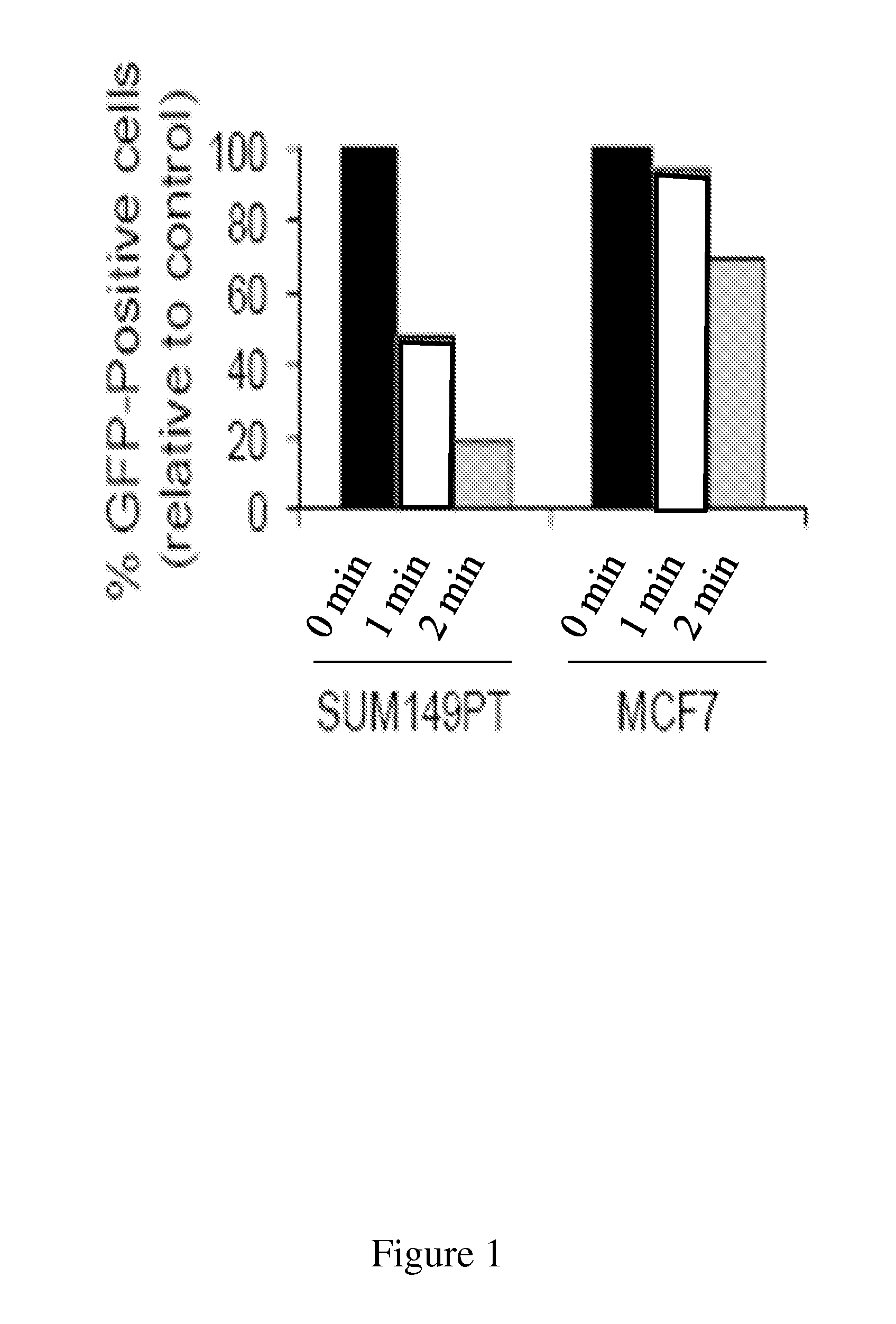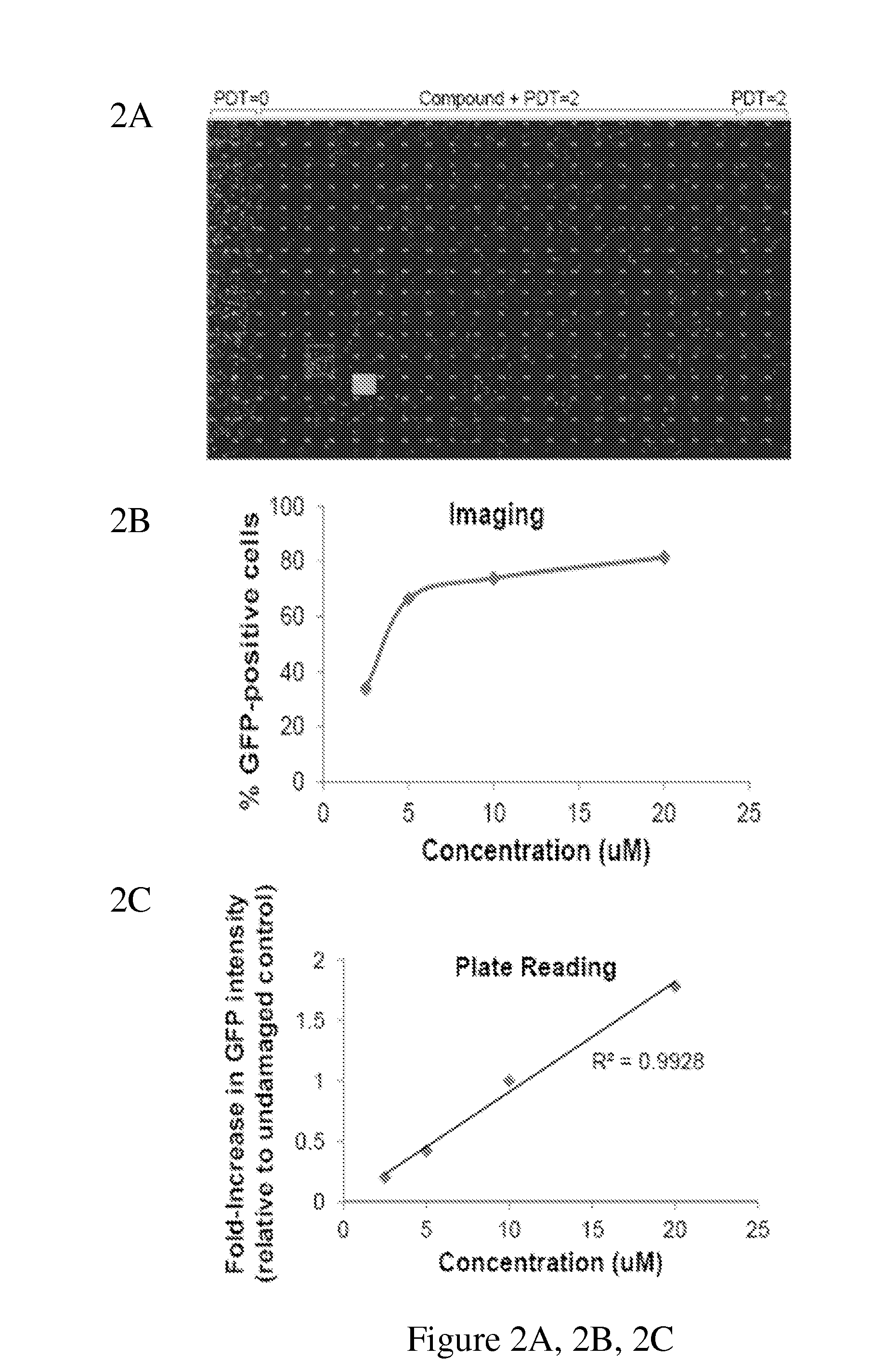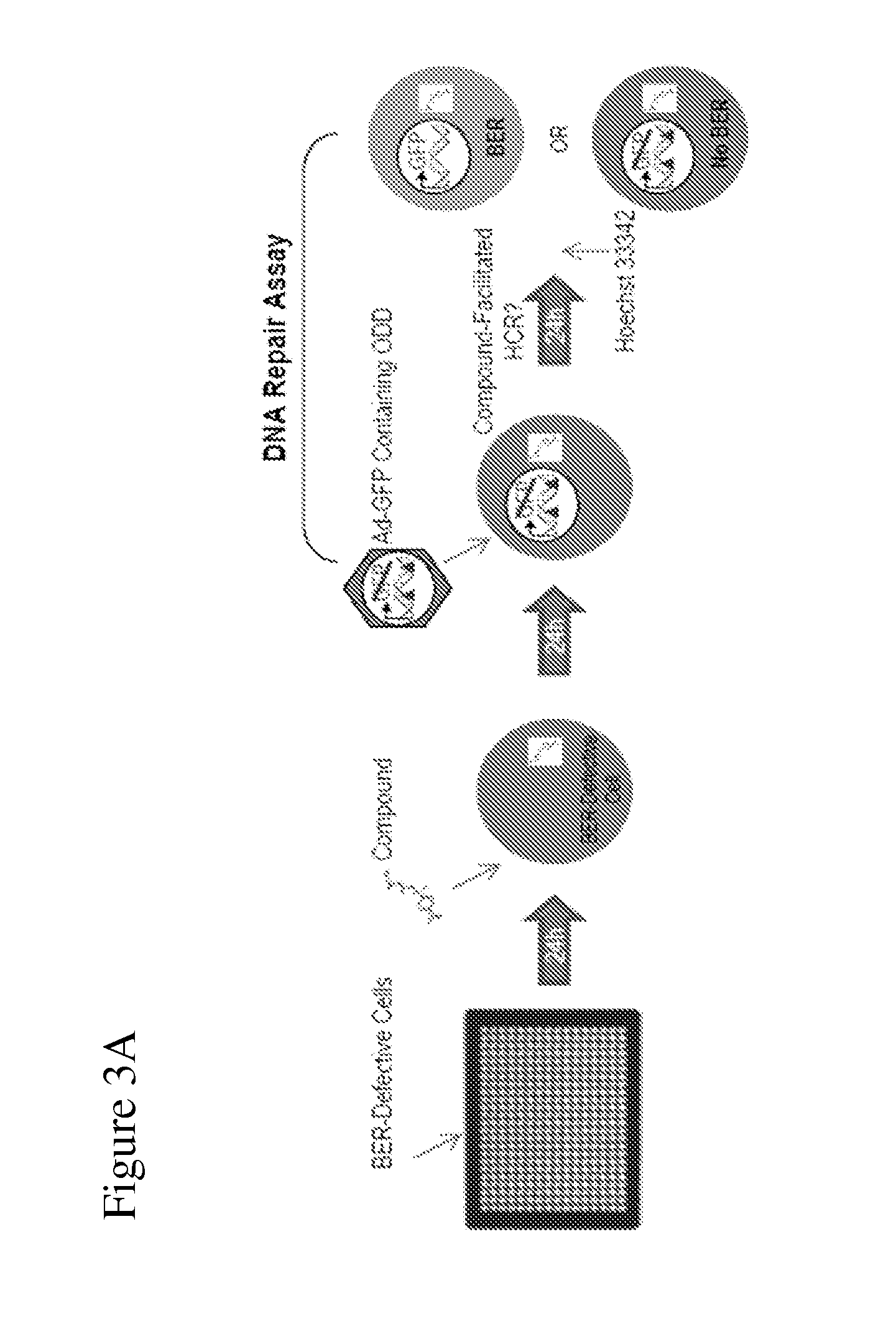Modulaton of cellular DNA repair activity to intercept malignancy
a cellular dna repair and activity technology, applied in the field of cancer prevention, can solve the problem of significant risk of developing such malignancy, and achieve the effect of preventing malignancy
- Summary
- Abstract
- Description
- Claims
- Application Information
AI Technical Summary
Benefits of technology
Problems solved by technology
Method used
Image
Examples
example 1
Identifying DNA Repair Agents by Chemical Library Screening
[0123]To identify molecules that activate repair of ODD, we screened a chemical library using a DNA repair assay. The screening protocol consisted of four steps:[0124](1) plating of BER-defective cells;[0125](2) addition of compounds (or controls);[0126](3) the DNA repair assay;[0127](4) addition of Hoechst 33342 live-cell dye (to allow for normalization to cell number) prior to fluorescent detection by image analysis and plate reading (FIG. 3A).
[0128]The DNA repair assay provides the advantage of evaluating BER of ODD while maintaining an intact cellular environment, which is superior to previous assays that have been limited by specificity and in vitro analyses. The cell-based DNA repair assay is an activation assay that is ideal for high-throughput use due to its requirement for only a single-reagent transfer step and fluorescent read-out.
[0129]Briefly, cells of interest are transfected with an ODD-containing GFP reporter...
example 2
Defining the Cell Line, Identifying Controls, and Preparing the Chemical Library
[0130]SUM149 human breast cancer cell line was chosen due to its ability for adenoviral infectivity (required for delivery of the ODD reporter) and its inability to effectively repair ODD (required for detection of compound-facilitated BER) (FIG. 1).
[0131]DMSO served as the negative control and 18 μM BrdU functioned as the positive control. We identified BrdU in a preliminary screen (FIG. 2A-2C) due to the lack of an existing but necessary small-molecule positive control. The molecule that produced the greatest GFP signal was defined as the small-molecule positive control. A montage of the images obtained from the 384-well plate at the highest concentration tested (18 uM) is shown (FIG. 2A). BrdU produced a visible signal similar to that of SUM149PTcells infected with undamaged adGFP. BrdU produced a dose-response increase in the percentage of GFP-positive cells (normalized to the number of Hoechst 33342...
example 3
Optimization of Conditions for HT-Screening
Seeding Density
[0133]Cells were first plated in black-wall, clear-bottom, 384-well plates at 4000 cells / well followed by 1:1 serial dilutions. Seeding density was defined to produce logarithmically growing cells after 4 days, which is consistent with the timing for the HT-screen, and was determined to be 750 cells / well (data not shown).
Determination of MOI
[0134]SUM149PT cells were then seeded as described above and subjected to the screening protocol using mock reagents, but were infected with ad-GFP at M.O.I.=100 pfu / cell followed by 2-fold serial dilutions. Infections were carried out in duplicate. Optimal MOI was defined as the lowest amount of virus that delivered the greatest fluorescent signal by high-content imaging, and was determined to be 50 pfu / ml, which is within the range specified by the manufacturer (i.e. 10-100 pfu / ml) (data not shown).
Optimization of Hoechst 33342
[0135]SUM149PT cells were seeded as described above and subje...
PUM
| Property | Measurement | Unit |
|---|---|---|
| pH | aaaaa | aaaaa |
| volume | aaaaa | aaaaa |
| concentration | aaaaa | aaaaa |
Abstract
Description
Claims
Application Information
 Login to View More
Login to View More - R&D
- Intellectual Property
- Life Sciences
- Materials
- Tech Scout
- Unparalleled Data Quality
- Higher Quality Content
- 60% Fewer Hallucinations
Browse by: Latest US Patents, China's latest patents, Technical Efficacy Thesaurus, Application Domain, Technology Topic, Popular Technical Reports.
© 2025 PatSnap. All rights reserved.Legal|Privacy policy|Modern Slavery Act Transparency Statement|Sitemap|About US| Contact US: help@patsnap.com



